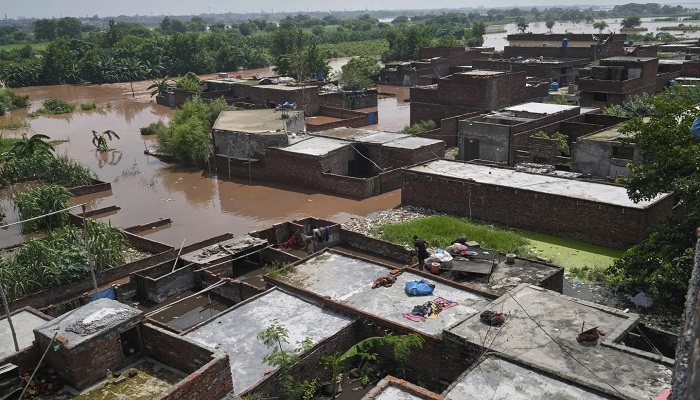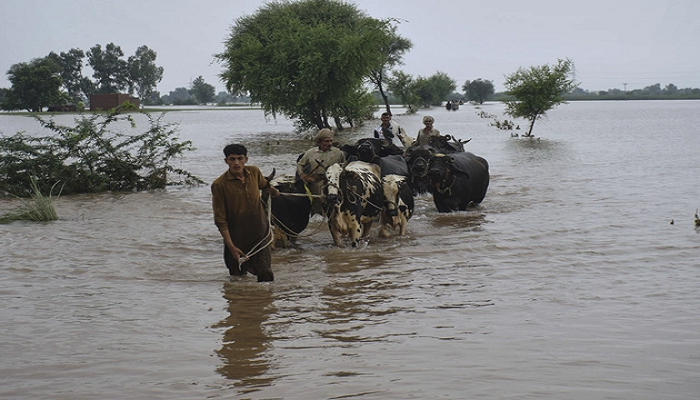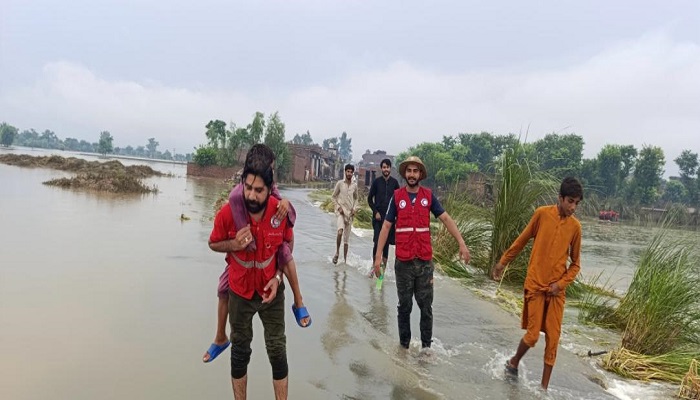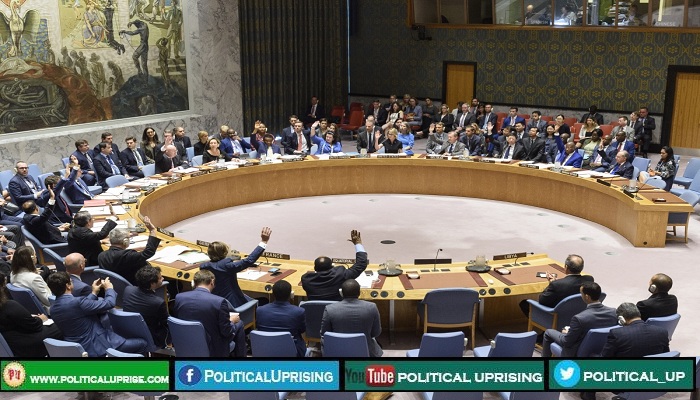Pakistan is facing one of its most severe flood crises in recent history, as torrential monsoon rains combined with upstream water releases from India have wreaked havoc across multiple provinces between July and September 2025.
The unprecedented flooding has resulted in staggering losses of life, infrastructure, livestock, and livelihoods, leaving millions displaced and struggling for survival.
The 2025 monsoon season brought exceptionally heavy rainfall, with some regions recording up to 400% above average precipitation. Provinces including Punjab, Sindh, Balochistan, and Khyber Pakhtunkhwa bore the brunt of this deluge, with rivers swelling beyond capacity and flash floods sweeping through towns and villages.
Further aggravating the crisis, India’s release of excess water from dams upstream along the Indus River basin contributed to the flooding downstream in Pakistan. Sudden surges overwhelmed embankments and irrigation channels, submerging vast swathes of agricultural land and residential areas, particularly in Punjab and Sindh.

According to official assessments, over 2,800 people have lost their lives, with thousands injured or reported missing. More than 4 million individuals have been displaced, seeking refuge in overcrowded relief camps and makeshift shelters.
Livestock losses have devastated the rural economy, with approximately 1.2 million animals perishing. The floods washed away or severely damaged around 5,500 kilometers of roads and destroyed nearly 1,200 bridges, complicating rescue and relief efforts.
ADB to Fund $2B Rail Project in Pakistan Amid China’s Delays on Key Mining Route
Over 300,000 homes were damaged or completely destroyed, leaving countless families homeless, while critical public infrastructure including schools, health centers, and government buildings also suffered heavy damage.
Agricultural losses are profound, with an estimated 3 million hectares of farmland inundated, threatening food security and the sector’s recovery.

Tragically, two military helicopters were lost during rescue operations in Punjab and Khyber Pakhtunkhwa, underscoring the perilous conditions faced by rescue teams. Despite these setbacks, aerial and ground relief operations continue without pause.
Pakistan’s military, disaster management authorities, and local NGOs have mobilized extensively to conduct search, rescue, and relief activities. Efforts include evacuating stranded people, distributing food and medical supplies, and setting up temporary shelters. However, damaged infrastructure and ongoing rains have hindered access to many affected areas, delaying aid delivery.
In response to the disaster, key international donors and organizations have pledged and disbursed aid. The Asian Development Bank announced a USD 3 million emergency grant from its Asia Pacific Disaster Response Fund to assist relief operations. The European Union committed approximately USD 1.1 million (PKR 350 million) towards emergency humanitarian assistance, including health services, water and sanitation projects, and cash support for vulnerable populations.
Pakistan Launches Army Rocket Force Command to Boost Strike Power
China provided a USD 6 million grant earmarked for reconstruction of homes, particularly in Balochistan province. The United Nations released USD 600,000 in emergency funds for food distribution, shelter, and coordination on the ground.
Despite these contributions, experts warn that the scale of the disaster requires substantially more resources to address both immediate humanitarian needs and long-term recovery. Rebuilding homes, restoring infrastructure, rehabilitating agriculture, and ensuring health and sanitation services will demand sustained and coordinated efforts from national and international stakeholders.

Climate experts caution that such extreme weather events are becoming increasingly frequent due to climate change, emphasizing Pakistan’s need to invest in resilient infrastructure and improved flood management systems.
Amid this humanitarian crisis, the International Federation of Red Cross and Red Crescent Societies (IFRC), in close partnership with the Pakistan Red Crescent Society (PRCS), has intensified emergency relief efforts. Manzoor Ali, Program Coordinator of IFRC Pakistan Delegation, explained, “We are supporting the Pakistan Red Crescent Society to respond to disaster-affected communities across AJK, KP, GB, and Punjab Province. An initial allocation has covered basic needs including relief distribution, health services, WASH, multipurpose cash grants, protection, and disaster risk awareness reaching 43,200 people in the early stage.”

He added that after the third spell of monsoon rains, PRCS requested an emergency appeal through IFRC for CHF 16 million to assist over 225,000 people with shelter, livelihoods, multipurpose cash grants, WASH, and health support over 16 months.
The Pakistan Red Crescent Society, with IFRC’s technical and financial backing, has deployed mobile health teams providing medical care in remote areas, distributed cooked meals, dry rations, hygiene kits, and long-lasting insecticidal nets, and supplied safe drinking water through water treatment plants currently four are operational with plans to expand to 12.

The IFRC coordinates this response through a federation-wide approach, working closely with PRCS, the International Committee of the Red Cross (ICRC), and partner national societies to harmonize strategies and maximize collective impact. According to Manzoor Ali, “Regular strategic, operational, and technical meetings are held to strengthen coordination. PRCS serves as the lead convener of the humanitarian response while IFRC plays the role of co-convener.”
Longer-term recovery and resilience are priorities as well. Farid Abdulkadir, IFRC Head of Delegation in Pakistan, stressed, “Our emergency appeal is not just about saving lives today, it’s about helping communities build resilience for the harsher climate realities of tomorrow.” He highlighted that Pakistan contributes little to global emissions yet bears the brunt of the climate crisis. The operational strategy includes disaster risk reduction, preparedness, and community resilience programming through December 2026.

PRCS Chairperson Mrs. Farzana Naek emphasized the urgency, saying, “This is an urgent humanitarian emergency. Each passing hour is crucial. We are actively responding on the ground, but more support is urgently needed to save lives and prevent further suffering.” PRCS teams of staff and volunteers have been working to deliver clean water, meals, medical care, emergency shelter, and essential supplies, with emergency control rooms activated nationwide to coordinate aid distribution.

The IFRC has launched a CHF 17 million emergency appeal, building on an initial CHF 1 million from the Disaster Response Emergency Fund (DREF), to support the PRCS in expanding flood relief operations. These funds aim to scale up lifesaving activities and lay foundations for long-term recovery in the months and years ahead.
The total estimated cost of the 2025 floods in Pakistan is projected to exceed USD 30 billion, covering both immediate damages and long-term economic losses. This estimate draws on comprehensive assessments from previous catastrophic events, such as the 2022 floods, which inflicted approximately USD 14.9 billion in direct damages and an additional USD 15.2 billion in economic losses due to disruptions in agriculture, infrastructure, and industry. Reconstruction efforts at that time required over USD 16 billion to support resilient recovery and rebuilding.
Iran and Pakistan Agree on Joint Projects for Silk Road and Gwadar-Chabahar Connectivity
Recovering from the unprecedented 2025 floods will be an immense challenge, demanding years of sustained effort and billions of dollars in investment. The widespread destruction of homes, critical infrastructure, agricultural land, and livelihoods underscores the need for strong national commitment paired with robust international support.
Experts emphasize that without substantial funding and a strategic focus on climate-resilient infrastructure, Pakistan remains highly vulnerable to future disasters that could further destabilize its economy and society. Though the path ahead is daunting, coordinated action offers hope that Pakistan can rebuild stronger and better prepared for the escalating climate risks ahead.



